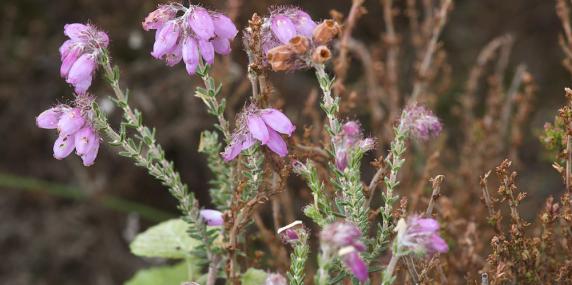Cross-leaved Heath is a type of heather that gets its name from the distinctive whorls of four leaves that occur along its stems. An evergreen shrub, it prefers acid bogs and wet heath or moorland. It flowers between July and September and attracts many nectar-loving insects including bees and moths.
Purple-carpeted heaths are an iconic feature of the UK's landscape and are the result of hundreds of years of low-impact human activities such as livestock-grazing and scrub clearance. Yet development and the decline of traditional farming methods have caused many of these precious habitats to be lost - over 80% of lowland heathland in the UK has disappeared in just 200 years. The Wildlife Trusts manage many heathland habitats for the benefit of wildlife; by volunteering for your local Trust you can help too, and you'll make new friends and learn new skills along the way.
